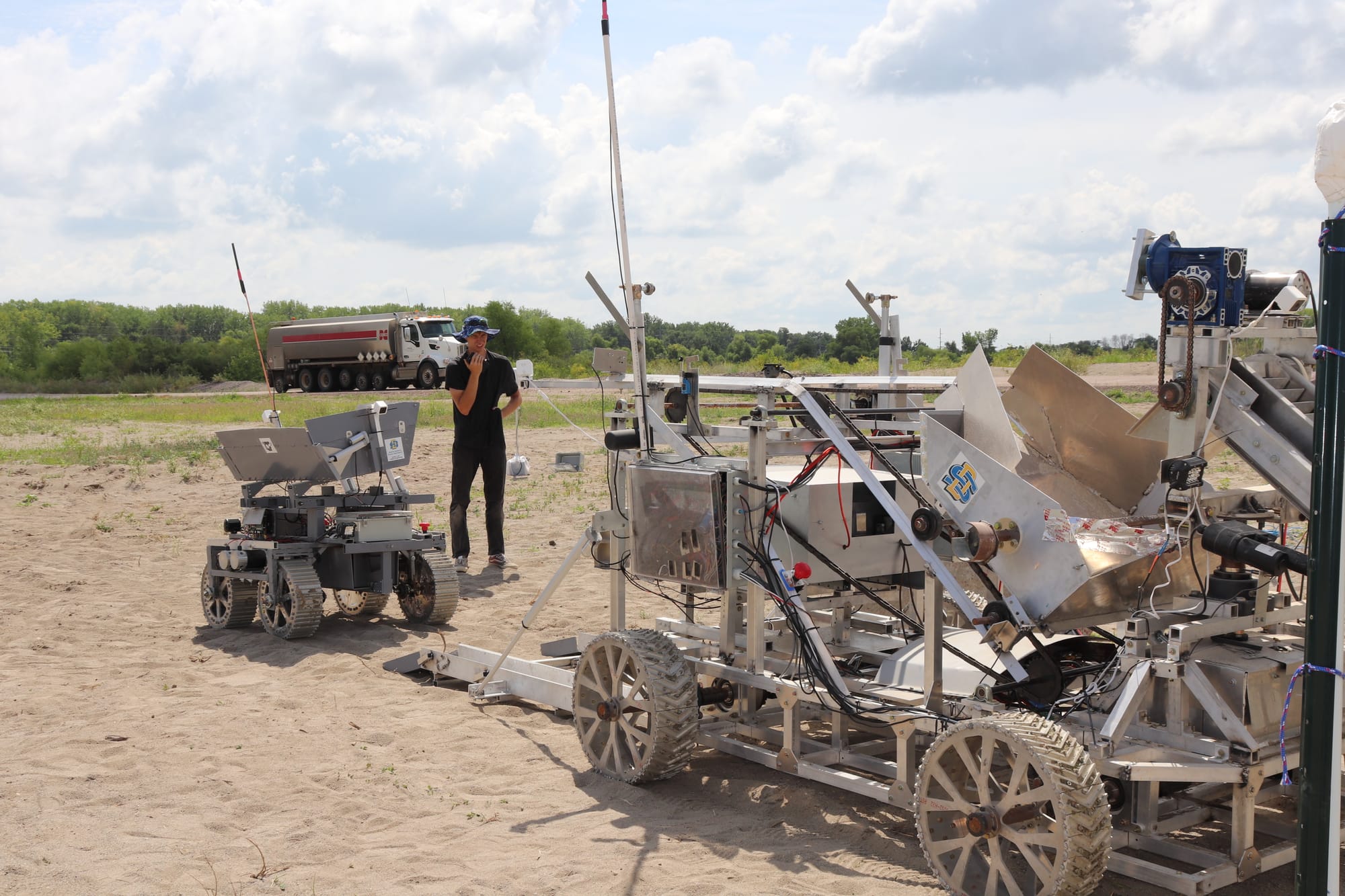Simplified: Engineering students at South Dakota State University are now among six finalists globally in a NASA competition to design a rover to explore the coldest regions of the moon.
Why it matters
- NASA's Break the Ice Lunar Challenge started in 2020, when the government agency put out a call to innovators to create robotic systems tough enough to not only traverse but excavate parts of the moon that receive no sunlight.
- SDSU Associate Professor Todd Letcher saw this challenge, and thought it was a great opportunity to give his mechanical engineering students a chance to work on a project directly applicable to the aerospace industry – an area he sees many students express interest in. Now, they're finalists for a potential $1 million cash prize.
- Over the last three years, and with students coming and going on the project, Letcher's team has advanced to the final six teams out of an initial 31 applicants. SDSU's rover is one of only a few in the competition created by a university and not by an existing aerospace company.
"We're all very excited to have this kind of opportunity in front of us, and we're not taking it lightly by any means," Letcher said. "We basically told (the students), 'You can't think about this as a senior project anymore. This isn't just for a grade. This is your chance.'"
Tell me more about the project
Work began in January 2021, when a group of about 15 SDSU engineering students started figuring out their concept for a rover. Over the years, students have come and gone, bringing its own challenges with continuity, but it's consistently been about 15 people on the team, Letcher said.
- Their initial proposal was selected to move on to phase two, in which students then figured out exactly how they'd bring their idea to life. That proposal was again selected to move on with the top 15 projects globally.
Students then received $25,000 from NASA to build and test their rover concept. That work earned them the distinction of moving on to the top six competitors, as announced last week.
- Now, they'll earn another $75,000 to rebuild the rover to work even better.
Letcher said the continued advancement of his students in this NASA competition shows that SDSU's engineering program is really "doing great things."
"We're all going to benefit from it," Letcher said. "This could be your chance to break into NASA or SpaceX or whatever your dream job is. We're getting noticed by people nationally and internationally."
What happens next?
The SDSU team will bring its rebuilt prototype of its Space Trajectory excavator to a NASA facility this spring, where it will compete against the other finalists.
“Bringing the competitors to one central location is the best way to end a challenge like Break the Ice because it provides us with an opportunity to observe and test their designs in a common relevant environment,” said Mark Hilburger, a senior research engineer in the Space Technology Exploration Directorate at NASA’s Langley Research Center in Hampton, Virginia, and principal technologist for Break the Ice.
The final winners will receive up to $1 million in prize money, and the winning design may even get a chance to go to the moon.


